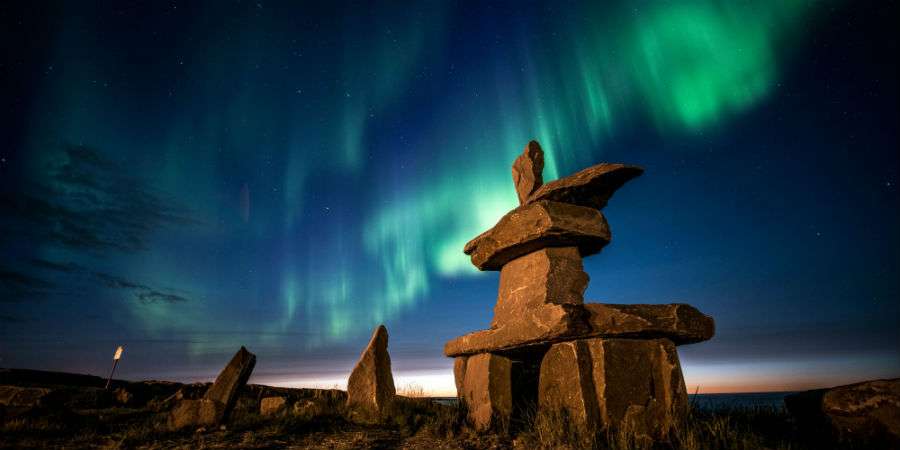The North West Company Historical Timeline
2017: NWC Acquires North Star Air and Expands in The Caribbean
NWC Acquires North Star Air
On June 15, 2017, the Company acquired 100% of the outstanding common shares of North Star Air Ltd. (NSA). NSA is a Thunder Bay-based airline, providing cargo and passenger services within northwestern Ontario, Canada through its hubs in Pickle Lake, Red Lake, Sioux Lookout and Moosonee, Ontario and Thompson, Manitoba.
The acquisition was completed to gain efficiencies in our logistics network and enable the Company to provide faster, more consistent delivery of merchandise to our stores in northern Canada that are generally inaccessible by all-weather road. NSA's current fleet comprises 17 aircraft, including five Basler BT-67, eight Pilatus PC-12, three ATR 72 and a Dash 8. These aircraft have been selected for their ability to deliver cargo, fuel and passengers to the Canadian north on a cost-efficient basis.
NWC Expands in The Caribbean
On February 9, 2017, the Company acquired 76% of the outstanding common shares of Roadtown Wholesale Trading Ltd. (RTW), operating primarily as Riteway Food Markets in the British Virgin Islands (BVI). RTW is the leading retailer in BVI with seven retail outlets, two Cash and Carry stores and a wholesale operation.
2012: Celebrating 25 Years
The North West Company celebrates the 25th anniversary of its rebirth in the retail market.
2007: NWC Acquires Cost-U-Less
In 2007, NWC acquired Cost-U-Less (CUL), a growing chain of 12 mid-sized warehouse club-style stores in the United States Territories, foreign island countries in the South Pacific, Hawaii, and the Caribbean. CUL has earned its position as the best value warehouse store on each island by providing wider than usual warehouse selection and service at everyday low prices, all the while remaining sensitive to each community's needs.
2001: NWC and Giant Tiger Stores Limited Join Forces
Giant Tiger Stores Limited enters into a master franchise agreement with the North West Company to open stores under the Giant Tiger banner in Western Canada.
The first Giant Tiger stores in Western Canada were opened in Winnipeg and Thompson in 2001. The signing of a master franchise agreement with Giant Tiger Store Limited of Ottawa, Ontario in 2002 paved the way to expansion across the four western provinces. Giant Tiger stores are situated in convenient urban locations and regional rural centres, blending everyday low prices on basic family and household needs combined with the newest fashions (arriving daily) at equally unbeatable prices.
1994: First NorthMart Store Opens in La Ronge, SK
NorthMart stores are targeted at larger, regional markets and offer an expanded selection of fresh food and fashion merchandise. The first NorthMart opened in La Ronge, Saskatchewan in 1994 followed by hub locations such as Iqaluit, Hay River, Happy Valley and Inuvik.
1992: NWC Purchases Alaska Commercial Company
In 1992, NWC purchased Alaska Commercial Company (ACC) whose roots trace back to the original Russian American Company established during the time Russia held claim to Alaska. Based in Anchorage, ACC was already the leading retailer in rural Alaska with 20 AC Value Center stores serving a market of 75,000. Similar to Northern stores in Canada, AC Value Center stores provide groceries and general merchandise to communities located in mostly remote locations.
1990: Northern Retail Banner Rolled Out
The Northern retail banner was introduced in 1990 as part of a renaming of the former HBC Northern Stores outlets, offering a combination of food and general merchandise to remote northern and rural Canadian communities. A typical Northern store operates in communities with populations from 500 to 7000. They average 7500 square feet in size and offer food, family apparel, housewares, appliances, outdoor products, and a growing offering of services such as quick-service prepared food, special ordering, money transfers, cheque cashing, and health-related products and services.
1987: Rebirth
By the mid-1980s, the Northern Stores Division represented the heart of The Company - the 178 stores (most of them former trading posts) represented the firm's traditions and values and were where reputation had been built during the fur trade era. In 1987, a group of investors, including 415 employees, purchased HBC's Northern Stores Division and three years later adopted "The North West Company" as the formal name for the new venture, harking back to a long and proud tradition, and an enduring, enterprising spirit. Hudson's Bay House in Winnipeg was renamed "Gibraltar House," after NWC's first Red River fort, and continues to serve as the head office. Today's North West carries forward the rich enterprising legacy as one of the longest continuing retail enterprises in the world. Many of our stores in northern Canada and Alaska have served their local communities for over 300 years.
1953: Inuit Art Carving A New Market
Prior to the 1950s, Inuit artistry largely served utilitarian purposes (such as the decoration of everyday garments and light-weight tools, a natural part of a nomadic lifestyle). The Company's network of remote trading posts led naturally to its role as the major trader of Inuit Art, promoting art production, organizing exhibitions, and facilitating export. Inuit Art quickly became a hit with international collectors - a new art genre had been created as had a sustainable income source for numerous Arctic communities. Today, NWC remains the world's largest wholesaler of Inuit art, distributed through The Company's Inuit Art Marketing Service.
1943: Northern Growth
Canada's North opened at the end of the war. Bush pilots and scheduled air access provided faster ways to cross trackless terrain, and natural resource exploration drew new people to the North to tap veins of wealth. Economic and infrastructure development, along with income redistribution and management of Native affairs, brought new jobs and created new revenue streams with a widened local economic base. Customers clamoured for packaged food as seen in advertisements (a significant shift from earlier goods, such as molasses, that had been supplied in bulk containers). Responding to expanded opportunities, The Company renamed its former Fur Trade Division the Northern Stores Division. These thriving community-based retail stores contributed significantly to profitability.
1935: Frontier Merchants
The day-to-day challenges of remote operations made fine-tuning expertise in the logistics and communication critical. The introduction of radio-telephone technology in 1935 provided contact between stores, headquarters, and the broader world. Generators provided stores and communities with sought-after electricity. Wartime research spurred new technologies in communication, followed by access to televised broadcasts. As technology advanced, so did customers' demands in remote regions. This, in turn, called for creative problem-solving and drive rapid innovation within The Company.
1881: Trading Becomes Retailing
By the late 19th century, The Company was widening its horizons. Steamboats replaced canoes and York Boats on the Lower Saskatchewan, Assiniboine, and Red Rivers, and on the larger lakes. While still active in the fur trade, focus turned to agricultural land development, rail transportation, and cash-based retailing, in large part to serve new waves of immigrants as Canada expanded its dominion to the Pacific.
1821: Rivals Unite
Although initially, the Hudson's Bay Company had provided little real competition, this began to change as the eighteenth century wore on. Shifting colonial borders, civil war, curtailed trade opportunities, the impact of early waves of immigrant settlers, and duplication between HBC and NWC trading posts, resulted in inevitable change. In 1821, NWC merged resources with longtime competitor HBC. From this point forward, trade across the northern and western frontiers would be carried out under the name of The Hudson's Bay Company. After the merger, The Company controlled 3 million square miles of land (7.77 million km2) and a total of 173 trading posts. This consolidation gave weight to Britain's claims in western Canada and later helped prevent the western provinces from being absorbed into the United States.
1803: Trading & Teamwork
Spread over vast geography, NWC's success was built on the essential skills of Aboriginal peoples and hinged on the effective interaction and expertise of merchant partners, agents, voyageurs and Aboriginal trappers. Merchant partners coordinated with Europeans to import goods for trade and to promote the sale of furs. Merchant and wintering partners were considered Company owners and were paid the interest that their shares accumulated, Stationed at trading posts, wintering partners were enterprising managers, cultivating and managing their traders' relationships with First Nation communities and supervising the clerks, voyageurs, and others in their employ. The wintering partners and other hivernants, the name given to voyageurs required to season at least one winter past the Height of Land (west of Fort William, now Thunder Bay), often fought starvation and became accustomed to remote work in a harsh climate. They relied immensely on the support and goodwill of the Aboriginal people whose furs they traded.
Agents (bourgeois) were responsible for finances, and for obtaining European trade goods, wholesaling, and supply.
Voyageurs (engages) were "engaged" to perform the hard physical labour of paddling and portaging, as well as constructing and maintaining trading posts. It was common for voyageurs to wait as long as four years to receive their pay.
Aboriginal Trappers exchanged locally trapped furs for imported manufactured goods that were not otherwise available. Most First Peoples welcomed the fur trade.
1779: A New Company Is Formed
After the British takeover of New France, the North West Company (NWC) was established in Montreal, largely by newly arrived Highland Scots who formed several partnerships that combined to form the North West Company in 1779-1784. Building on the French fur trade expertise and voyageur labour, the new company quickly moved inland, far beyond the Great Lakes. Use of lightweight canoes allowed us to compete with HBC traders, held back by heavy wooden York boats and their reluctance to venture inland from their posts on the shore of Hudson Bay. Our enterprising spirit led us ever westward by the means of hardy voyageurs - portaging heavy loads, paddling through rough rapids, and persevering through harsh, isolated winters. By the 1790s, Nor/Westers had become leaders of the fur trade and had mapped much of what is now north west Canada.
1668: Furs From Afar
Early in 1668, the Nonsuch sailed from England in search of fur, overwintering at James Bay at what is now the Northern store location of Waskaganish. Upon the ship's return, heavily laden with furs, King Charles 2 granted a royal charter for Rupert's Land (all land in the watershed flowing into Hudson Bay), forming the Hudson's Bay Company (HBC) in 1670. Hats made from beaver felt were in high demand from the 1600s until the mid-1800s.






